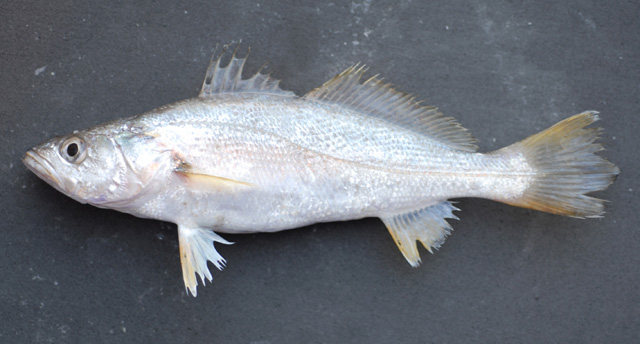| Sciaenidae (Drums or croakers) |
| 63.5 cm TL (male/unsexed); max.weight: 2,780.0 g; max. reported age: 5 years |
|
demersal; brackish; marine |
| Western Atlantic: Florida, USA and Gulf of Mexico to Bay of Campeche, Mexico. |
|
Dorsal spines (total): 9-11; Dorsal soft rays (total): 25-29; Anal spines: 2-2; Anal soft rays: 10-12. Colour uniform silvery grey above, without conspicuous spots, silvery below. Pelvic and anal fins pale to yellowish. A faint dark area at bases and axial of pectoral fins. Inside opercle darkish, often visible externally. Mouth large, oblique, lower jaw slightly projecting. Upper jaw with a pair of large canine-like teeth at tip. Lower jaw with a row of widely spaced larger inner-row teeth, gradually increasing in size posteriorly. Chin without barbel or pore, snout with 2 marginal pores. Gas bladder with a pair of horn-like anterior appendages. Soft portion of dorsal fin with few small scales rows at base between soft fin rays (Ref 51721). |
| Occurs usually over sandy bottoms in shallow coastal waters, being relatively abundant in the surf zone. During summer months the fish move to their nursery and feeding grounds in river estuaries. |
|
Least Concern (LC); Date assessed: 14 February 2020 Ref. (130435)
|
| harmless |
Source and more info: www.fishbase.org. For personal, classroom, and other internal use only. Not for publication.

